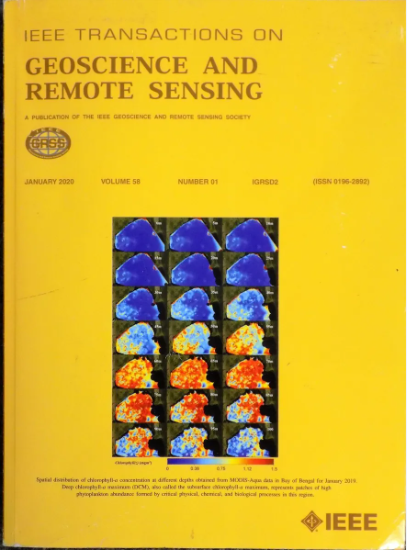利用嫦娥二号微波辐射计数据的新型三角球面亮度温度模型
IF 7.5
1区 地球科学
Q1 ENGINEERING, ELECTRICAL & ELECTRONIC
IEEE Transactions on Geoscience and Remote Sensing
Pub Date : 2024-09-11
DOI:10.1109/TGRS.2024.3457849
引用次数: 0
摘要
随着中国月球探测计划的不断推进,嫦娥(CE)系列轨道飞行器获得的大量亮度温度(TB)数据为研究月球地质提供了前所未有的机会。特别是嫦娥二号任务获得的亮温数据为研究月球地质特征提供了新的观测视角。在本文中,我们提出了一种利用 CE-2 微波辐射计数据构建月球 TB 模型的新型三角球面技术。具体来说,我们根据球面区域坐标直接对球面 TB 数据进行参数化,并使用球面贝塞尔曲面捕捉不同频率信道的昼夜 TB 分布。这一模型得益于球面数据的理论特征,这使我们能够构建几何公式,对月球的整个结核数据进行参数化。它采用八面体划分策略,将月球表面划分为八个区域,每个区域都经过迭代改进,通过详细分析提高精度。此外,球形贝塞尔曲面有效地减轻了结构成分对结核估算的复杂性。实验结果表明,所提出的月球结核模型在表征月球结核分布方面明显优于现有方法,为分析月球地质特征和热过程提供了重要应用。本文章由计算机程序翻译,如有差异,请以英文原文为准。
A Novel Triangulated Spherical Brightness Temperature Model of the Moon With Chang’e-2 Microwave Radiometer Data
With the continuous advancements in the Chinese lunar exploration program, the substantial brightness temperature (TB) data acquired by the Chang’e (CE) orbiter series have provided unprecedented opportunities for studying the geology of the Moon. In particular, the TB data obtained by the CE-2 mission have offered a new observational perspective for investigating the geological characteristics of the Moon. In this article, we propose a novel triangulated spherical technique for constructing a TB model of the Moon with CE-2 microwave radiometer (MRM) data. Specifically, we directly parameterize spherical TB data based on spherical area coordinates and use spherical Bézier surfaces to capture the TB distributions for daytime and nighttime across different frequency channels. This model is enabled by the theoretical characterization of spherical data, which allows us to construct geometric formulations that parameterize the entire TB data of the Moon. It incorporates an octahedral partitioning strategy and divides the lunar surface into eight regions, each undergoing iterative refinement to enhance precision through detailed analysis. Furthermore, the spherical Bézier surfaces effectively mitigate the complexity of structural components on TB estimations. Experimental results demonstrate that the proposed TB model of the Moon significantly outperforms existing approaches in characterizing the lunar TB distribution, providing important application in analyzing the geological features and thermal processes of the Moon.
求助全文
通过发布文献求助,成功后即可免费获取论文全文。
去求助
来源期刊

IEEE Transactions on Geoscience and Remote Sensing
工程技术-地球化学与地球物理
CiteScore
11.50
自引率
28.00%
发文量
1912
审稿时长
4.0 months
期刊介绍:
IEEE Transactions on Geoscience and Remote Sensing (TGRS) is a monthly publication that focuses on the theory, concepts, and techniques of science and engineering as applied to sensing the land, oceans, atmosphere, and space; and the processing, interpretation, and dissemination of this information.
 求助内容:
求助内容: 应助结果提醒方式:
应助结果提醒方式:


